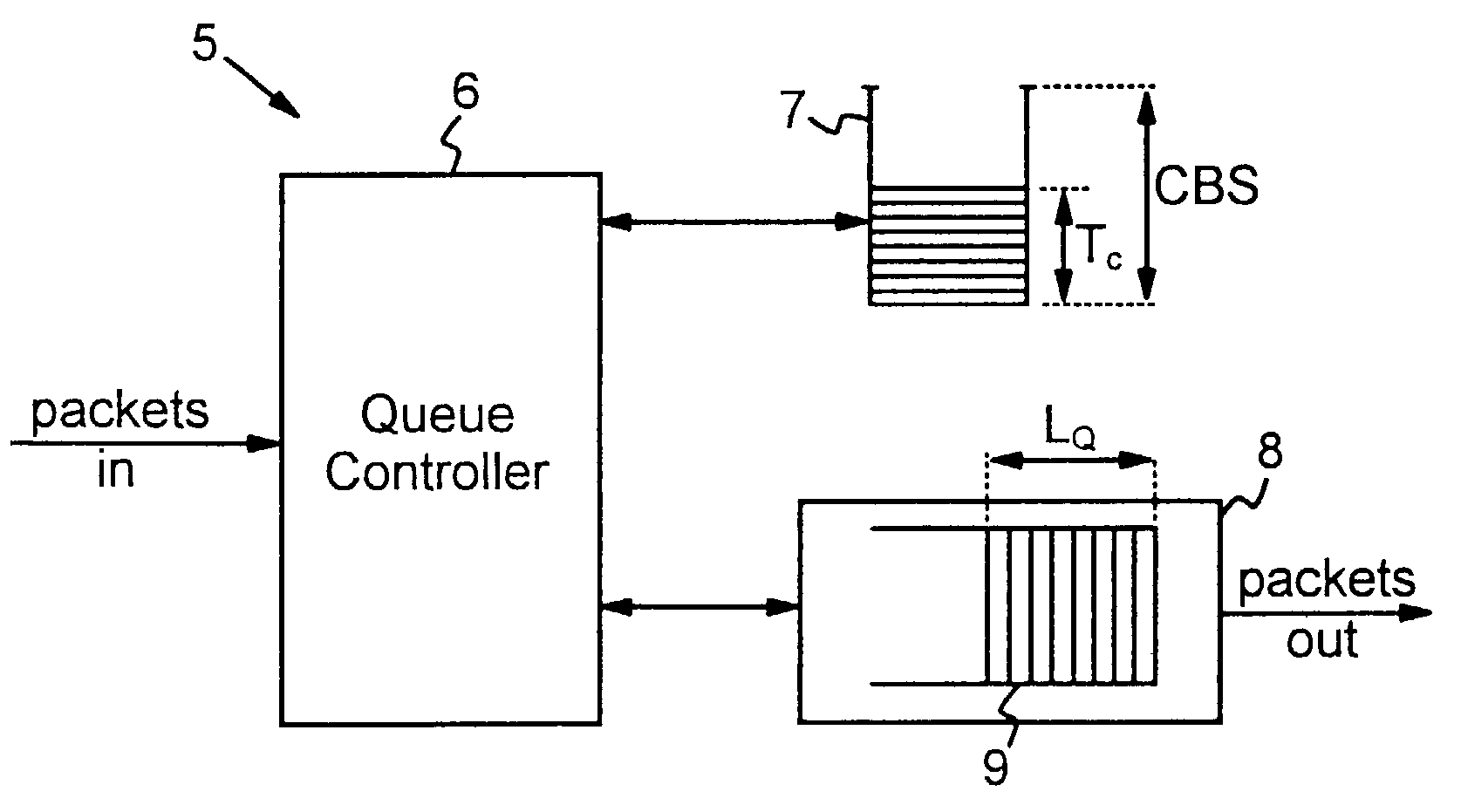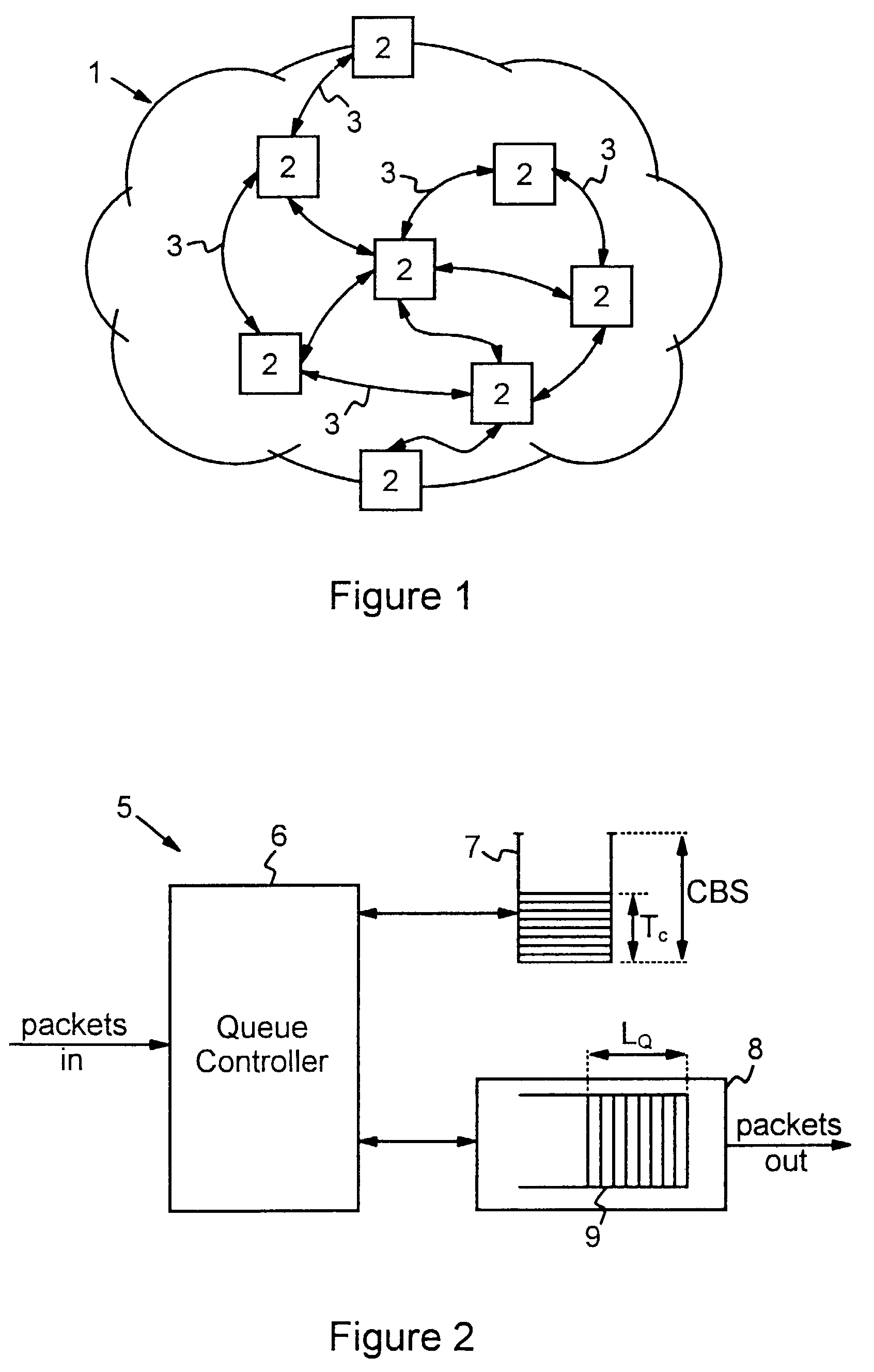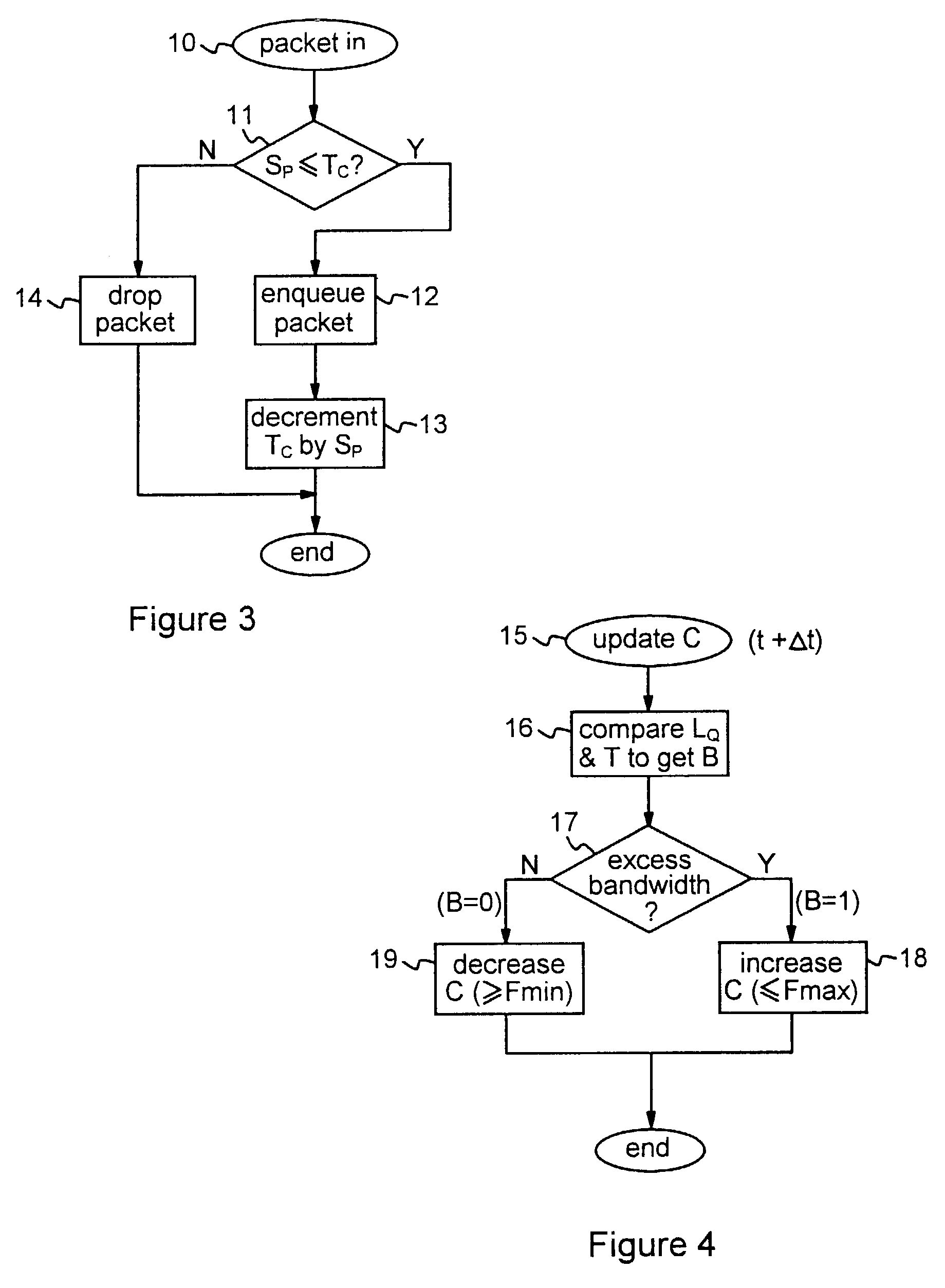Token-based active queue management
a queue management and token technology, applied in the field of token-based active queue management systems, can solve the problems of inability of network administrators to determine the correct parameter settings for operation of real networks, excessive packet queues, and inability to meet the needs of users, so as to avoid potential instability in the system, increase the increment rate progressively, and reduce the effect of the increment ra
- Summary
- Abstract
- Description
- Claims
- Application Information
AI Technical Summary
Benefits of technology
Problems solved by technology
Method used
Image
Examples
Embodiment Construction
[0032]FIG. 1 illustrates an example communications network 1 comprising a plurality of network devices, here routers 2, interconnected by links 3. The network 1 may form part of a larger network or internetwork, such as the Internet, or may itself represent such an internetwork. In any case, routers at the edge of network 1 typically have external links (not shown) to devices outside the network. Two such edge routers are shown in this example. The remaining six routers are core routers and have direct links only with other routers in the network.
[0033]The stability of network 1 depends on the use of congestion avoidance mechanisms in routers 2. Such mechanisms are ideally employed in both edge routers and core routers within the network. For responsive flows such as TCP (Transport Control Protocol) flows, the end-to-end congestion control mechanism provided by the network protocol is typically combined with an active queue management system for local congestion management. A prefer...
PUM
 Login to View More
Login to View More Abstract
Description
Claims
Application Information
 Login to View More
Login to View More - R&D
- Intellectual Property
- Life Sciences
- Materials
- Tech Scout
- Unparalleled Data Quality
- Higher Quality Content
- 60% Fewer Hallucinations
Browse by: Latest US Patents, China's latest patents, Technical Efficacy Thesaurus, Application Domain, Technology Topic, Popular Technical Reports.
© 2025 PatSnap. All rights reserved.Legal|Privacy policy|Modern Slavery Act Transparency Statement|Sitemap|About US| Contact US: help@patsnap.com



